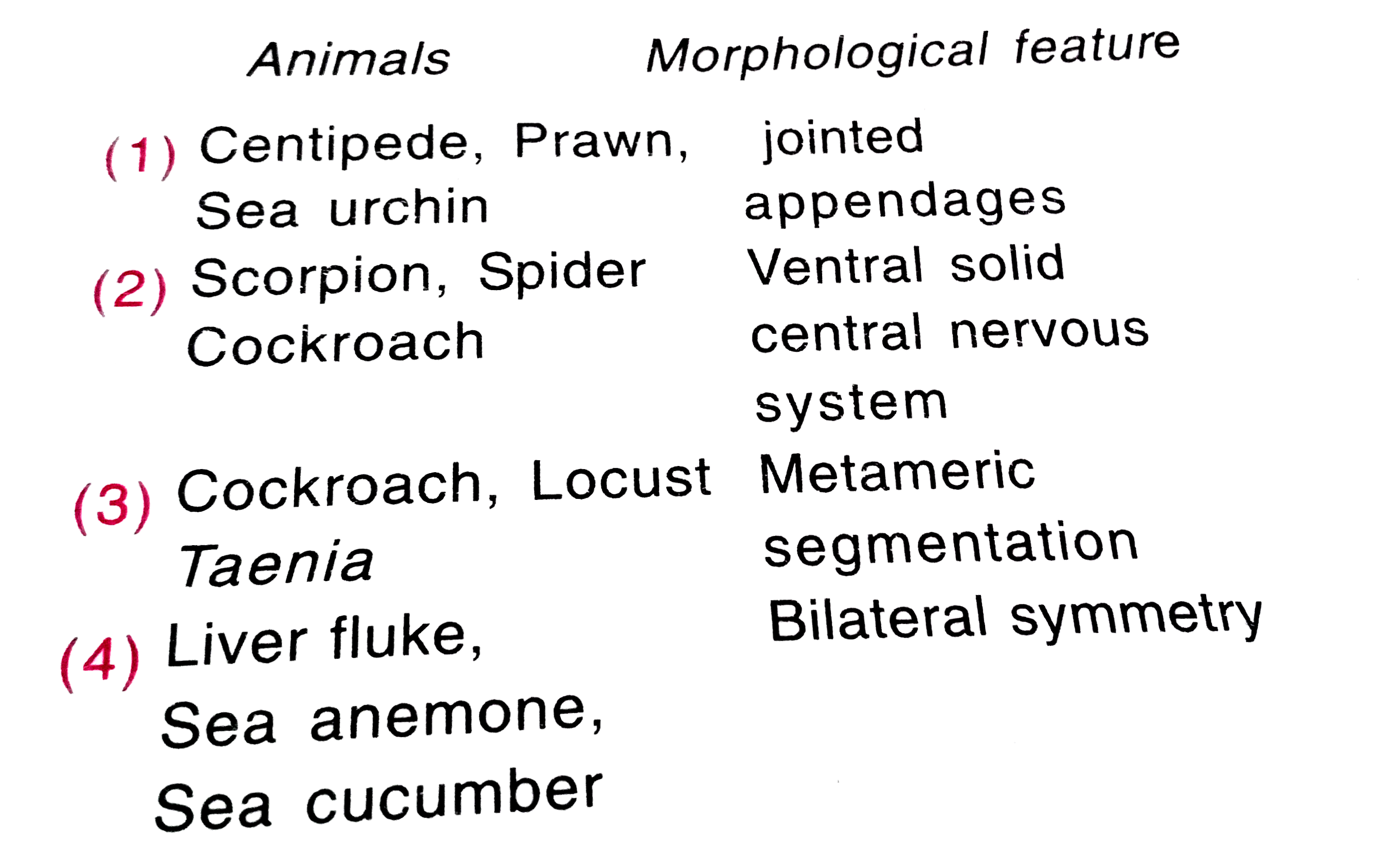Cladode' is a characteristic morphological feature of
Asparagus and Ruscus
Casuarina and Opuntia
Cladophora ad Cactus
Citrus and Euphorbia
The correct Answer is:A
To solve the question regarding the characteristic morphological feature known as 'cladode', we can follow these steps:
1. Understand the Term 'Cladode':
- A cladode is a modified stem that resembles a leaf. It is typically flattened and green, allowing it to perform photosynthesis.
2. Identify the Characteristics of Cladodes:
- Cladodes are usually found in plants where the leaves are reduced or absent. They serve the purpose of photosynthesis and can store water.
3. Review the Options Provided:
- The options given are:
- A) Asparagus and Druscus
- B) Casuarina and Opuntia
- C) Cladophora and Cactus
- D) Citrus and Euphorbia
4. Analyze Each Option:
- Option A (Asparagus and Druscus): Asparagus has cladodes, which are modified stems. Druscus is not a commonly known plant but could refer to Dracaena, which also has similar features.
- Option B (Casuarina and Opuntia): Both are known for having phylloclades (modified stems), but they do not specifically refer to cladodes.
- Option C (Cladophora and Cactus): Cladophora is an algae and does not have cladodes. Cactus has spines instead of leaves.
- Option D (Citrus and Euphorbia): Citrus has thorns, and Euphorbia has fleshy stems, neither of which are cladodes.
5. Determine the Correct Answer:
- The only option that correctly identifies a plant with cladodes is Option A (Asparagus and Druscus).
Final Answer:
The correct answer is Asparagus and Druscus.
---
- A cladode is a modified stem that resembles a leaf. It is typically flattened and green, allowing it to perform photosynthesis.
- Cladodes are usually found in plants where the leaves are reduced or absent. They serve the purpose of photosynthesis and can store water.
- The options given are:
- A) Asparagus and Druscus
- B) Casuarina and Opuntia
- C) Cladophora and Cactus
- D) Citrus and Euphorbia
- Option A (Asparagus and Druscus): Asparagus has cladodes, which are modified stems. Druscus is not a commonly known plant but could refer to Dracaena, which also has similar features.
- Option B (Casuarina and Opuntia): Both are known for having phylloclades (modified stems), but they do not specifically refer to cladodes.
- Option C (Cladophora and Cactus): Cladophora is an algae and does not have cladodes. Cactus has spines instead of leaves.
- Option D (Citrus and Euphorbia): Citrus has thorns, and Euphorbia has fleshy stems, neither of which are cladodes.
- The only option that correctly identifies a plant with cladodes is Option A (Asparagus and Druscus).
The correct answer is Asparagus and Druscus.
Similar Questions
Knowledge Check
Which one of the following groups of three animals is correctly matched with their one characteristic morphological feature?
AAnimalsMorphological featuresScorpion, spider cockroach−Ventral solid central nervous systemBAnimalsMorphological featuresCockroach,locust,Taenia−Metameric segmentationCAnimalsMorphological featuresLiver fluke, sea anemone, sea cucumber−Bilateral symmetryDAnimalsMorphological featuresCentipede,prawn,sea urchin−Jointed appendages
A dolipore septum is a characteristic feature of
View SolutionPresence of xylem vessels is a characteristic feature of
View SolutionCiliated solid larva is the characteristic feature of
View SolutionWhich is not a characteristic feature of mammals
View SolutionCasparian strip is a characteristic feature of
View SolutionPseudocoelom is a characteristic feature of
View SolutionMarginal placentation is a characteristic feature of legumes.
View Solution

